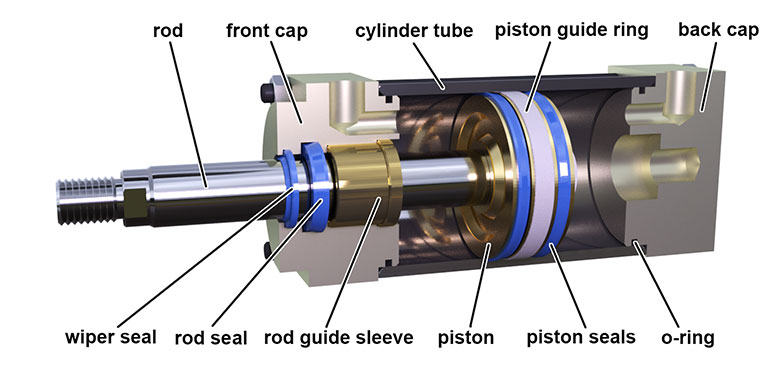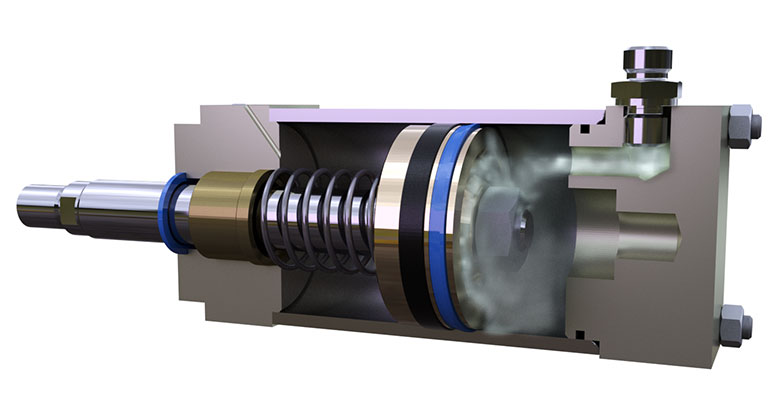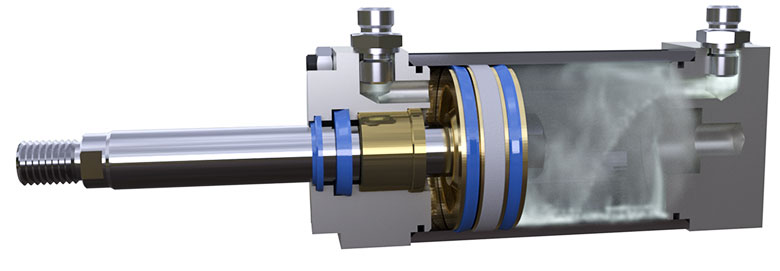Pneumatic cylinders
A pneumatic cylinder allows you to convert the compressed air energy into linear motion.
Compressed air enters the cylinder cavity through the cap and presses on the piston in the cylinder barrel. Under the pressure of compressed air, the piston moves. The rod attaches to the piston and moves along with it. The rod can lift a load or move some mechanism.
Construction

A cylinder piston is inside a cylinder barrel – a pipe with a smooth inner surface. The piston has seals for separating the piston and rod cavities. The piston may also have piston guide rings. They ensure the sliding of the piston along the cylinder barrel. Magnet rings are needed so that sensors can determine the position of the piston.
A long rod with a polished surface is attached to the piston. An O-ring seal is attached to the joint between the piston and rod. To make the pneumatic cylinder airtight, you should install the front and end caps by placing O-ring seals at the joints between the cylinder barrel and caps. These caps have holes for supplying compressed air. The front cap has a seal to prevent air from flowing along the surface of the rod and a wiper seal to prevent dust from entering the pneumatic cylinder cavity.
Rod and cylinder barrel surfaces in contact with the seals must be very smooth to avoid damage to the seals and ensure close contact.
Operation
A pneumatic directional valve is needed to control the pneumatic cylinder.
Air moves from the compressor to the valve, which is locked in the neutral position. When switching the valve, compressed air will move from the compressor to the piston cavity, and the rod cavity will connect to the atmosphere.
The rod will extend. When switching the valve to the opposite position, compressed air will move from the compressor to the rod cavity, and the piston cavity will connect to the atmosphere. The rod will retract.
Types
Single-acting pneumatic cylinder

In single-acting pneumatic cylinders, air affects the piston from only one side. The reverse occurs under the action of spring force or load. For the reverse, you need to release air from the opposite cavity.
Double-acting pneumatic cylinders

In double-acting pneumatic cylinders, air affects the piston from both sides. When introducing air into the piston cavity, air from the piston cavity is sent to the atmosphere, thus making the rod extend. To retract the rod, you need to supply compressed air to the rod cavity and connect the piston cavity to the atmosphere.
Telescopic pneumatic cylinders
In telescopic pneumatic cylinders, the rod is folded like a telescope. The rod of telescopic pneumatic cylinders can be extended to a great length, while the cylinder itself has small overall dimensions.
Telescopic cylinders can be single acting or double acting.